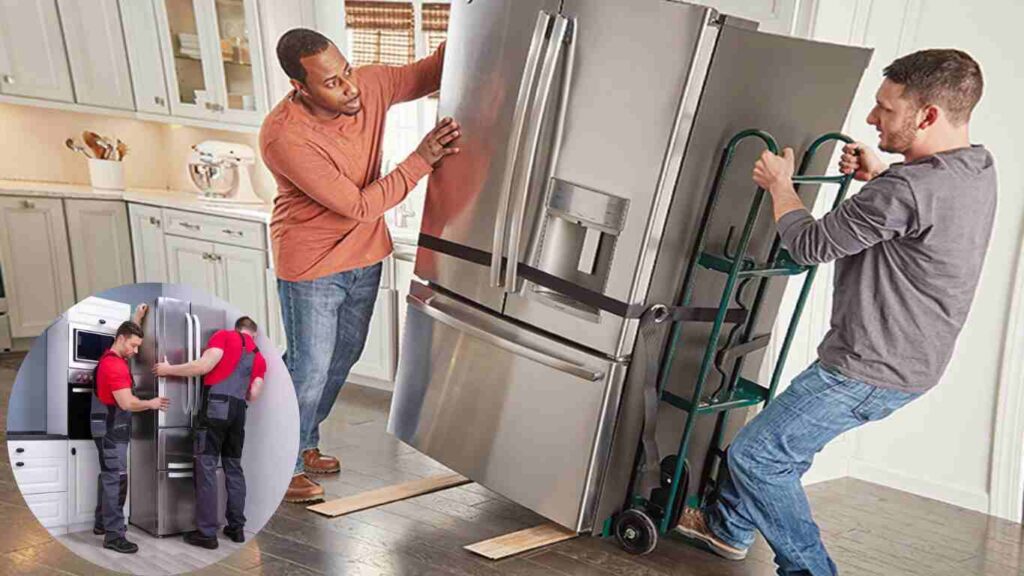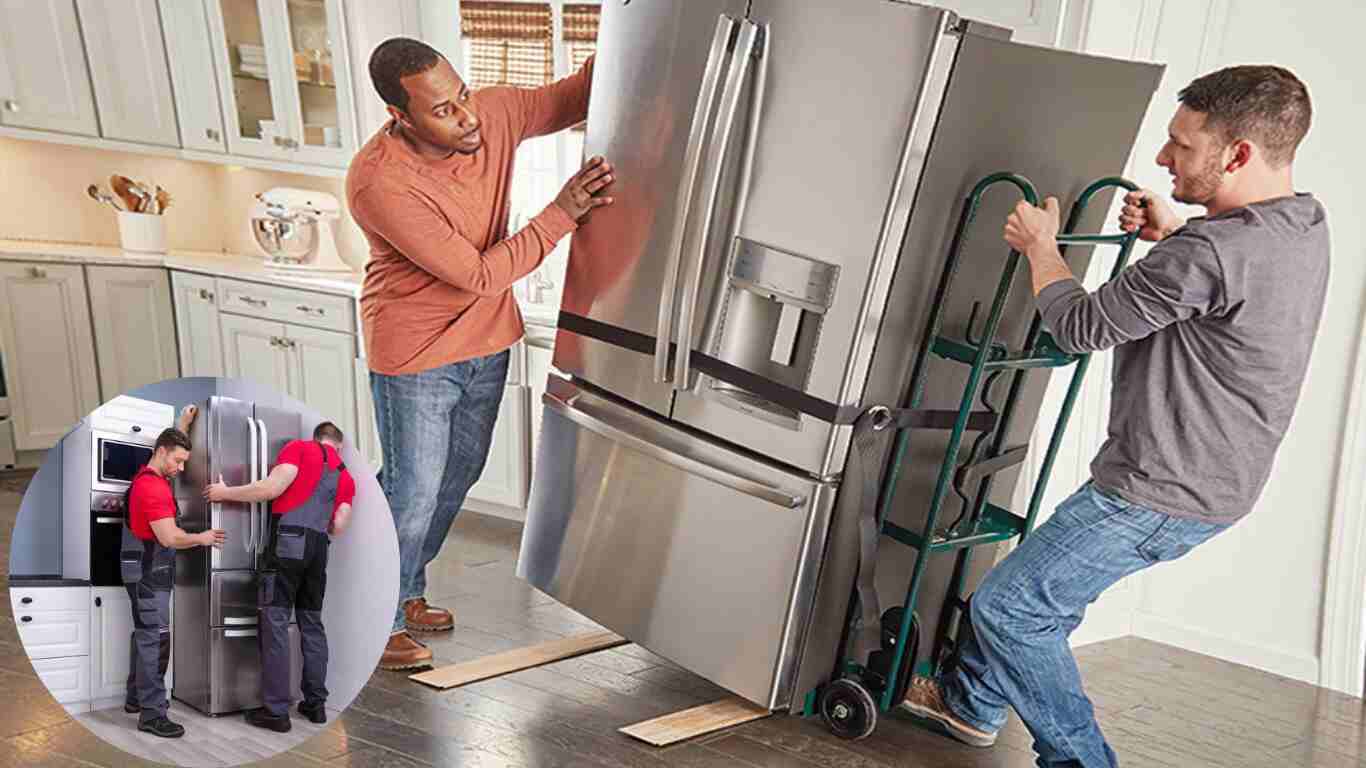It may sound like a daunting task to move a refrigerator yourself, but it is not as impossible as it sounds. That’s because refrigerators are among the heaviest and most cumbersome household appliances, which typically take some planning, the right tools and a little bit of elbow grease to remove. But don’t worry! With the right direction, you can complete this job safely and efficiently, all the while saving yourself some cash and the headaches of hiring movers.
| Step | Description | Tools/Materials Needed |
|---|---|---|
| Remove all food and loose items to lighten the load and prevent spills. | Coolers, ice packs | |
| Unplug the refrigerator and detach any water lines if applicable. | Screwdriver, drill | |
| Tape down shelves, trays, and other removable parts to prevent damage during transport. | Tape, moving blankets | |
| Measure doorways to ensure the fridge will fit through. | Measuring tape | |
| Load the fridge onto an appliance dolly with straps for safe transport. | Appliance dolly, straps | |
| Clear the path to your transport vehicle and identify any obstacles or tight corners. | – | |
| Have at least one person guide the front while another pushes from behind, communicating clearly. | – | |
| Keep the refrigerator upright during transport to avoid damage to the sealed system. | Moving truck or van | |
| If laid down during transport, let it stand upright for a period before plugging it back in. | – |

Picture this: You’ve just bought a shiny new refrigerator or have to move your old one to a different spot in your home. There’s the thrill of going and then the panic of just how bloody big and cumbersome it is. Moving a refrigerator can seem like an insurmountable task, particularly if you’re doing it by yourself.
But here’s the good news. With the right preparations, tools and some smart methods, it’s possible to move a refrigerator safely without injuring yourself or damaging the appliance.
The Pleasure of Moving a Refrigerator Yourself
Home appliances are heavy, and hiring professional movers can be costly, especially if you are moving one appliance only. Not only does doing it yourself save you money, but it also gives you a sense of accomplishment. Also, you control the whole process of packing, so you can be certain your fridge is in good hands.
You may also read (cuisinart air fryer basket dishwasher safe)
In this guide, you’ll learn:
- Get your refrigerator ready to move.
- The strategies and devices necessary for an effortless move.
- Safety precautions for your own well being and the appliance.
- Things you do after you move to set your fridge right.
Getting ready for that big move to your new home, or just need to turn your kitchen upside down? This guide will equip you with absolutely everything you need to know to move your fridge like a pro.
Know Your Refrigerator
Before you rush towards a plan of moving your refrigerator, there are some things that you need to know about moving your refrigerator. This will help you better plan the move, avoiding potential mishaps.
Types of Refrigerators
- Different types of refrigerators are available with their challenges while moving as well. The most common types are:
- Top-Freezer Refrigerators: They are relatively smaller and lighter than other types weighing around 150-200 on average.
- Bottom-Freezer Refrigerators: These tend to be a little heavier than top-freezer models, weighing in around 200–250 pounds.
- Side-by-Side Refrigerators: These larger units can weigh up to 300 pounds.
- French Door Refrigerators: These are some of the heaviest refrigerators that range from 250-350 pounds on average.
- Just knowing what sort of refrigerator you have will give you an idea of the weight and the tools you’re likely to need.
Weight Considerations
The weight of the refrigerator is due to the design including cooling systems, compressors, and insulation. On average:
- Large refrigerators tip the scales at about 150 pounds.
- The average refrigerator weighs between 200-300 pounds
- Some big refrigerators weigh more than 400 pounds.
Knowing the weight to determine whether you can handle the move by yourself or would need help.
Assessing the Space
- Here’s what you want to know before you start packing:
- Doorways: Check that the fridge can be carried through without getting stuck.
- Hallways: Look for narrow areas that may be difficult to navigate.
- Staircases If stairs will be involved, take extra precautions and make accommodations for safety.
Pro tip: When the fit is too tight, take the doors or the handles off the refrigerator. This makes a huge difference in itself!
Preparing for the move
The key to a successful move is preparation. Here’s how to get started.
Gathering Supplies
- How to Safely Move a Refrigerator To move a fridge safely, you’ll need the following tools and supplies:
- Dolly or Hand Truck: A heavy-duty dolly is important for the heavy weight of the refrigerator.
- Straps for moving: Hold the fridge in place on the dolly and out of an upright position.
- Protective Covers for Furniture: Prevent scratches and dings on the refrigerator during the move.
- Gloves: For a better grip and to protect your hands.
- Back Support Belt: Avoid back strain when lifting.
Essential supplies in place will mean that your moving experience goes as smoothly and safely as possible.
Clearing the Area
Make sure the path the refrigerator will take is clear before you start moving it around. Make sure to remove any rugs, furniture or other items that may cause you to trip while you’re walking. This helps avoid accidental stumbles or tumbles during the move.
Emptying the Refrigerator
Remove Everything: Clear out all edibles, beverages and removable shelves.
- Defrost the Freezer: Unplug the refrigerator and allow the freezer to completely defrost. This way, it doesn’t leak water when you move it.
- Lock the Loose Stuff: Tape or plastic wrap the shelves and drawers of your fridge to keep everything in place.
- Pro tip: Moving with perishable food? Keep it in a cooler.
Moving a Fridge: Tips and Tricks
Now that you’ve prepped your refrigerator, it’s time to move it. Here’s how to do so safely and effectively.
Using a Dolly
- Slide the dolly underneath the refrigerator from the side
- Strap the Refrigerator: Straps should be used to secure the refrigerator onto the dolly.
- Tilt Gently (Carefully): Move the dolly back at a 45-degree angle to lift the fridge while allowing the bottom to take ground.
Safety Tips:
If you must move the refrigerator, always keep it upright to prevent damaging the interior components.
Go slow and never jerk or drop the rod suddenly.
Teamwork vs. Solo Moving
Though this guide discusses moving a refrigerator alone, it’s vital to know how to ask for assistance. If the fridge is heavy, or there are stairs, having a second person can make it safer to move.
For solo movers:
- Use moving straps to help distribute the weight evenly.
- Dont forget to take a break if you feel overexertion.
- Moving Through Doorways and Up and Down Stairs
- Take off doors or handles from the refrigerator if necessary to squeeze through tight areas.
- That includes stairs, which should be handled carefully using ramps or planks.
Always hold on firmly and take one step at a time when travelling on the stairs.
After You Move
After the refrigerator is in its new spot, there are a number of crucial steps to take.
Setting Up the Refrigerator
Forms: In the fridge, leave appropriately spaced for ventilation.
Leveling: Use the leg adjustment on the fridge to make sure it’s level on the floor.
Let it Rest: After you drive, spend a few hours letting the refrigerator rest before plugging it in to allow the coolant to settle.
Reconnecting Water Lines
If your refrigerator has a water dispenser or ice maker, reconnect the water lines:
- Connect the water line to the refrigerator’s inlet valve.
- Turn on the water supply and check for leaks.
- Chapter Four: Top Mistakes That You Should Avoid
- Even planned carefully, mistakes can occur. Here are a few common ones to steer clear of:
- Overloading the Dolly: A dolly can be damaged if you try to move too much weight at once, and this can also cause injury.
Disregarding Safety Protocols: Such as not using gloves or back support belts.
Ignoring Measurements: This should be self-explanatory but …
Conclusion
A refrigerator may appear daunting to move by yourself, but it’s absolutely possible when you have the right preparation and moves in mind! With a little knowledge about your refrigerator, acquiring the relevant tools, and taking a few safety precautions, you can hop to it with confidence.
So, are you game to give it a shot? Leave us your experience or any questions in the comments below. You’ve got this!
You may also read (appliances use a 3 amp fuse)




